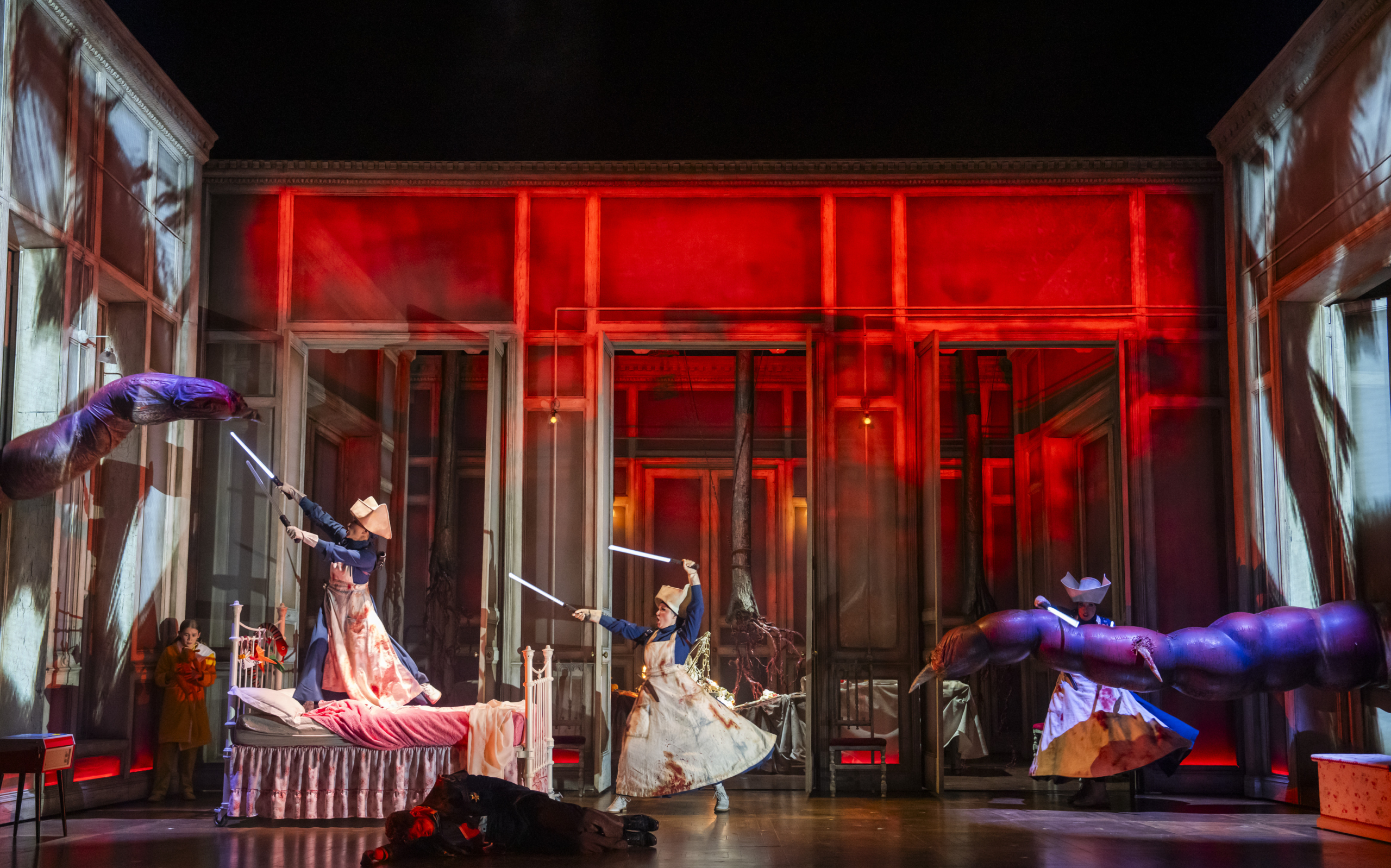Opera North’s production of Mozart’s opera sings and soars

The Magic Flute | The Lowry, Salford | 16th November 2024
Reviewed by Joseph Hunter
Audiences can get oversized ideas about their own importance. Yes, we are the ‘reason’ for what we are seeing. Without us, there is no show. The performers respond to our energy – we can improve a show by reacting actively. They do it for us. But watching the work of the cast, orchestra, and production team of The Magic Flute at the Lowry Theatre I felt I was getting the better side of the bargain: I felt spoiled.
The beginning overture is a perfect example. A young girl sleeps – or tries to – in a bed front of stage right, while beyond a group of well-heeled adults gather for a sumptuous meal around a candlelit dinner table. All is seamlessly layered: soaring orchestra, beautiful stage dressing and costumes, and dynamic physical performances.
The set – moveable hanging wall and door panels – perfectly evokes decadent, Regency-esque spaces in spite of its apparent simplicity. When the action moves to the forest, sinuously-rooted tree trunks are lowered from on high for the performers to weave their way among. All of it – and the performers themselves – is lit so beautifully that it glows.
The heart of the production, of course, is the music. Mozart’s creation is by turns grand, flamboyant, lilting, and delicate. It is delivered expertly by the Opera North orchestra, conducted by Oliver Rundell on the evening I attended. The Magic Flute contains so many hummable passages that I was not alone in doing so during the interval; other people queueing for their drinks were doing the same. This is perhaps why, as Laura Canning (General Director) remarks in her programme notes, it is so appealing to both seasoned opera-goers and first-timers.
Tamino is performed by Egor Zhuravskii, who delivers the romantic arias with power and control. Zhuravskii also plays the recitative spoken sections with a robust but po-faced earnestness that makes him a good foil for Papageno, who is given great charm by Emyr Wyn Jones. Papageno’s yearning for his as-yet-unfound Papagena (Pasquale Orchard) was genuinely moving, as was the later union between the two. Claire Lees sings Pamina’s arias with melodic and sweet emotion, with her opening lament being (for me anyway) a particular high point. Here the bed comes into use again, with many of her scenes revolving around it, underscoring her domestic imprisonment.
Perhaps the most explosive and virtuoso moments go to the Queen of the Night’s set piece arias, with their famous flying high Fs – and here they were delivered with aplomb by Anna Dennis. As well as this, the staggeringly low notes required for male antagonist Sarastro were mastered by Msimelelo Mbali, who had great gravitas throughout. A nice detail in this production is the styling and stage presence of the Three Ladies (Charlie Drummond, Katie Sharpe, and Hazel Croft). They are presented in bloodstained outfits reminiscent of horror-movie nurses, carrying dual short-form light sabres with which they dispatch the monster menacing Tamino. Other nice details include the creepy little ponytail plaits worn by the followers of Sarastro (performed by the Opera North Chorus), and their red, cult-ish uniforms.
The framing device of the girl in bed at the beginning presents the whole dizzying story as the dream or fantasy of a child – and towards the end of the action a group of children join the performers on stage. The effect is delightful, and if anything makes the ‘dream’ more vivid: the kind of dream, in fact, I wish to have more often. It’s a rare artistic creation that can move an audience, make them smile, and transport them so far outside the realms of ordinary experience. Director James Brining, the orchestra, the production team, and this vivacious cast have achieved all three. By the end I felt rather like a child myself: spoiled, happy, and allowed up past my bedtime.
Reviewed by Joseph Hunter
